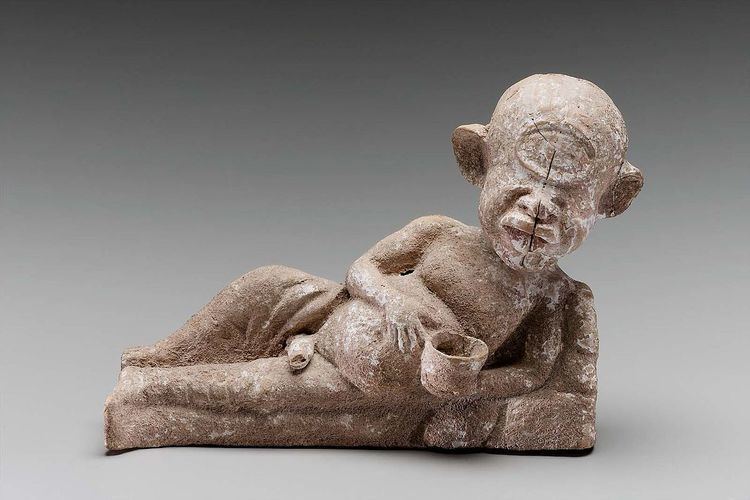 | ||
Polyphemos reclining and holding a drinking bowl is a Late Classical terracotta figure that was created in Boeotia, Greece in late 5th- early 4th century BCE. The Museum of Fine Arts, Boston purchased the statue in December 1901 from E.P. Warren, who bought the terracotta figure in Paris, in 1901, from a vendor who acquired it in Thebes.
The terracotta figure depicts Polyphemos, the Cyclops and antagonist of Odysseus in book nine of Homer’s Odyssey, as a dignified banqueter consuming wine. This figure depicts the scene in The Odyssey where, in order to escape death, Odysseus tricks Polyphemos to become highly intoxicated. The figure was discovered in the Kabirion sanctuary, which is situated near Thebes. Every year, the sanctuary held a festival where performers parodied popular myths. Polyphemos reclining and holding a drinking bowl reflects the presence and importance of humor in ancient Greek culture.
The figure is a satirical image of the Cyclops by likening his act of binging on wine to an elite drinking wine while attending a symposium. It was common to mock Polyphemos within Greek art and literature, which is reflected by Euripides’ satirical play The Cyclops.
Additionally, this terracotta figure displays the traditional artistic portrayal of Cyclopes during the Classical period. These characteristics include a pot belly, large ears, a large eye in the middle of the forehead, a bulbous nose, puffy lips, and fat cheeks.
